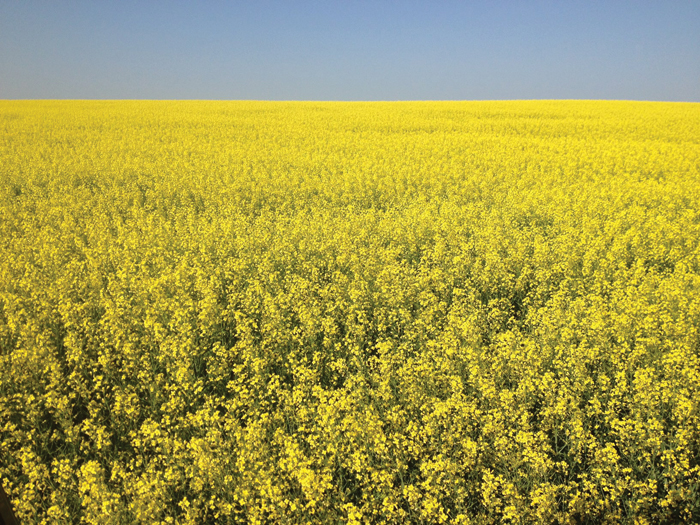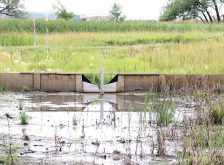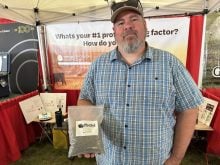This time of year it’s typically a good idea to remind producers that the seeds of our future are sown in the past. Your 2016 crop yields will be influenced by 2015 fertility and removal rates. Basically, we need to look back at the growing season and see how certain factors influenced the current crop, and then consider any potential ramifications going forward for the next year.
Many producers, especially around and west of Edmonton, noticed bumper yields in some crops (mainly canola), and marginal yields in others (cereals). This can be considered mainly a moisture related event, both on volume and timing, but it will have an agronomic effect on soil health and nutrient levels for the following year.
Read Also

Claas brings 1000 Series SP forage harvesters to Canada
In mid-August, Claas unveiled its new line of Jaguar forage harvesters at an event in Visalia, California, deep in the heart of that state’s dairy region.
Fertlizer rates
It is important to consider the additional removal rates of that extra 10, 15, or 20 bushels when calculating fertilizer application rates for 2016. Otherwise, your soil nutrient reserve can be lowered.
If you consider that a farmer applies nutrients for X amount of yield, and then harvests 100 to 120 per cent of that yield, the nutrient removal rate is higher than expected. On that same note, where there were lower yielding crops, some applied nutrients will still be present, as they weren’t all utilized to hit that target yield.
However, nutrient removal isn’t a perfect 1:1 ratio. Nutrients applied interact with soil microbes and other nutrients. Some become temporarily locked into organic matter, others into mineral complexes. Over time, these nutrients are all available to a plant, however more present in the soil in optimal amounts and ratios (relative to synergistic nutrients), will increase the amount that is available to a growing plant.
What was applied last year wasn’t 100 per cent available that year, or the following year, as it takes time to become available to the plant. That’s why it’s essential we know our yield averages and yield increases over the last several years, so we can plan our future fertility, and make the most of increasing crop yield potential.
The true yield
We should also consider what our yields actually are, relative to what we think they are. Time and time again I’ve heard that I live in a 40 bushel canola area (average yield potential), yet it’s not the number I hear thrown around year after year. I’m more than happy to hear of guys getting 42, 45, 50 — or in 2015 yields passing 60 bushels. However, for land that was at one time only capable of 40 bushels, it has time and time again proven it is capable of more, through increased fertility, advances in crop genetics, and refinement of agronomic practices.
Now it is more important than ever to make sure we consistently soil sample, and fertilizer based on crop yields, rather than what we feel is the average potential.
Over time, drawing down the soil nutrient reserve can result in lower availability of nutrients, or deficiencies for nutrients that are optimal in certain ratios.
This is a potentially depressing thought: given some recent market updates and outlooks, farmers may have to spend more money on fertilizer when crop prices are potentially declining.
This is just one of many factors to consider for long-term agronomic optimization. Essentially, we need to look less to our year-to-year yields and expenses, and try to plan for where we want to go over the long-term. If we want higher crop yields, we need to consider more inputs. For more inputs, we need to consider what we are removing, how much, and how we are going to increase availability to make the most of what we are applying, as well as how much we are applying.
Straw can be another consideration. Although some producers tend to shy away from this fact, it is well known that straw removes nutrients, primarily phosphorus and potassium. This year many producers who normally chop and spread straw found it was an excellent way to financially offset lower grain yields. However, removal of those nutrients does come at a cost. It is important to consider that those removed nutrients are no longer cycling through the soil organic matter, and in some form we need to replenish them.
As a farmer and an agronomist, I want to see other farmers succeed. Part of my success comes from their success. If I know I can help my neighbour grown a stronger, healthier crop, and make the most of his nutrient and fertility plan, then it helps him have a higher yielding and better quality crop to market. It also helps me ensure that my neighbour can continue to farm. At the end of the day, I want to know that my neighbour will still be farming tomorrow.
Bruce Avison, agronomist, Har De Agri Services.















